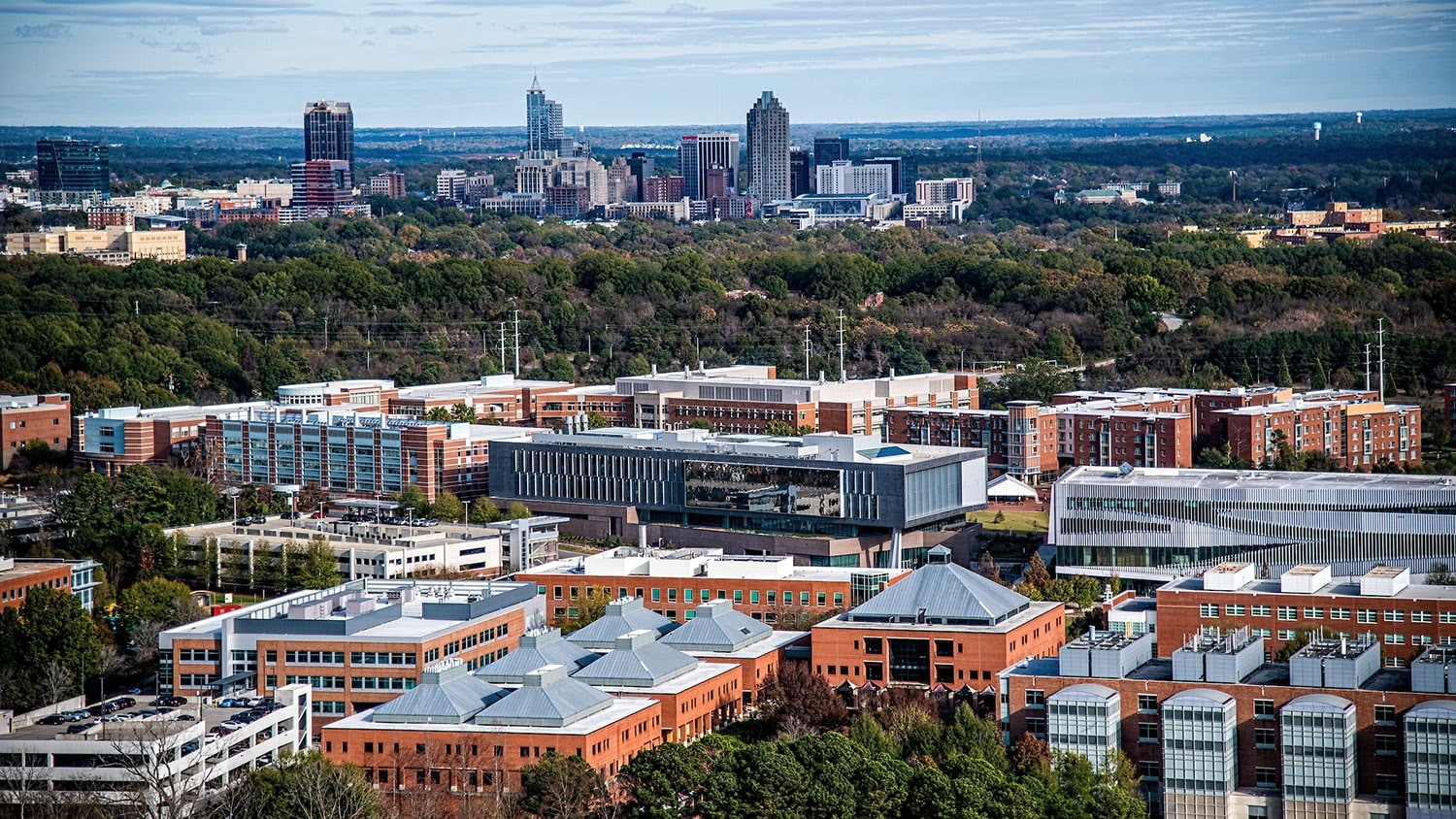Celebrating 40 Years of Centennial Campus

NC State’s Centennial Campus launched from a bold vision: to create a place where academia, industry and government could come together to tackle the grand challenges of society. Over the decades, the campus has become a landmark of research excellence, public-private partnerships and economic development.
As Centennial celebrates its 40th anniversary, we take a look back to its beginnings and the milestones that have shaped it into the innovation powerhouse it is today. And we honor the legacy built by Chancellor Woodson’s leadership — solidifying the continued transformation and future success of Centennial Campus.
Laying the Groundwork
NC State entered its second century at a crossroads. While the 1980s marked rapid expansion in student enrollment and research funding, the university lacked the land to accommodate growing demands. Bipartisan state and university leaders joined forces, looking beyond traditional boundaries to create something truly unique: Centennial Campus would not only advance academic excellence, but also serve as an innovation hub where private companies work alongside university researchers to solve real-world problems and bolster North Carolina’s economy.
The first step toward realizing this vision came in 1984, when Governor Jim Hunt transferred 355 acres of land from the Dorothea Dix property to NC State. This marked the beginning of a large expansion effort, with a second transfer coming in 1985 under Republican Governor Jim Martin, who allocated an additional 450 acres. These initial land transfers would lay the groundwork for the development of Centennial Campus over the following decades.


With the land secured, NC State embarked on creating a master plan led by Claude McKinney, former dean of the College of Design and a significant contributor in the development of Research Triangle Park. They envisioned a state-of-the-art, collaborative research campus that would complement RTP and serve as a major economic driver for the region.


The early days were not without challenges. Community officials initially raised concerns of the project’s impact on the local infrastructure, while some within the university were also resistant to the idea of moving key academic buildings to Centennial.
Economic Catalyst
After overcoming growing pains in the 1980s, the ’90s were a turning point. With the groundwork underway, NC State strengthened its commitment to research, innovation and building industry partnerships. This period also marked the formation of the Centennial Campus Partnerships Office, which over the years evolved into the Office of Partnerships — NC State’s central hub bringing together university researchers, private industry and government agencies to develop impactful collaborations.



Centennial entered the 21st century starting to live up to its promise. More than just a research park, the campus was becoming a place to commercialize university-driven research, turning intellectual property into solutions that would benefit the state’s economy.
Once Chancellor Randy Woodson took the helm in 2010, Centennial’s reputation as a premier location began to spread. This accelerated growth secured an increasing number of partnerships with global companies, government entities and emerging startups.
Today, Centennial is home to more than 70 partner organizations, from biotechnology to advanced manufacturing, data analytics and clean energy. The campus has grown from its humble start into one of the nation’s leading examples of public-private collaboration, providing cutting-edge resources to companies looking to solve the world’s most pressing challenges.
In recent years these partners have hired more than 3,000 NC State students and invested nearly $200 million in university research. Key recruitments during Woodson’s tenure include Eastman Chemical, the National Security Agency and Under Armour, among many others.
The opening of additional buildings and new amenities — such as the Lonnie Poole Golf Course, James B. Hunt Jr. Library, StateView Hotel, Fitts-Woolard Hall and the Plant Sciences Building — advance the campus’ role as a unique learn-work-live-play ecosystem.
The Next 40
Looking ahead, continued expansion of the campus will benefit generations to come. Current plans include a 30-acre mixed-use innovation development coupled with investments in programming to help create an even more dynamic community — and to further Centennial’s four-decade success story.

Through four decades of change and growth, Centennial Campus has shown that with bold vision and creative partnerships, anything is possible. Here’s to 40 years of innovation — and to remaining a proving ground for NC State’s Think and Do impact.
This post was originally published in NC State News.


